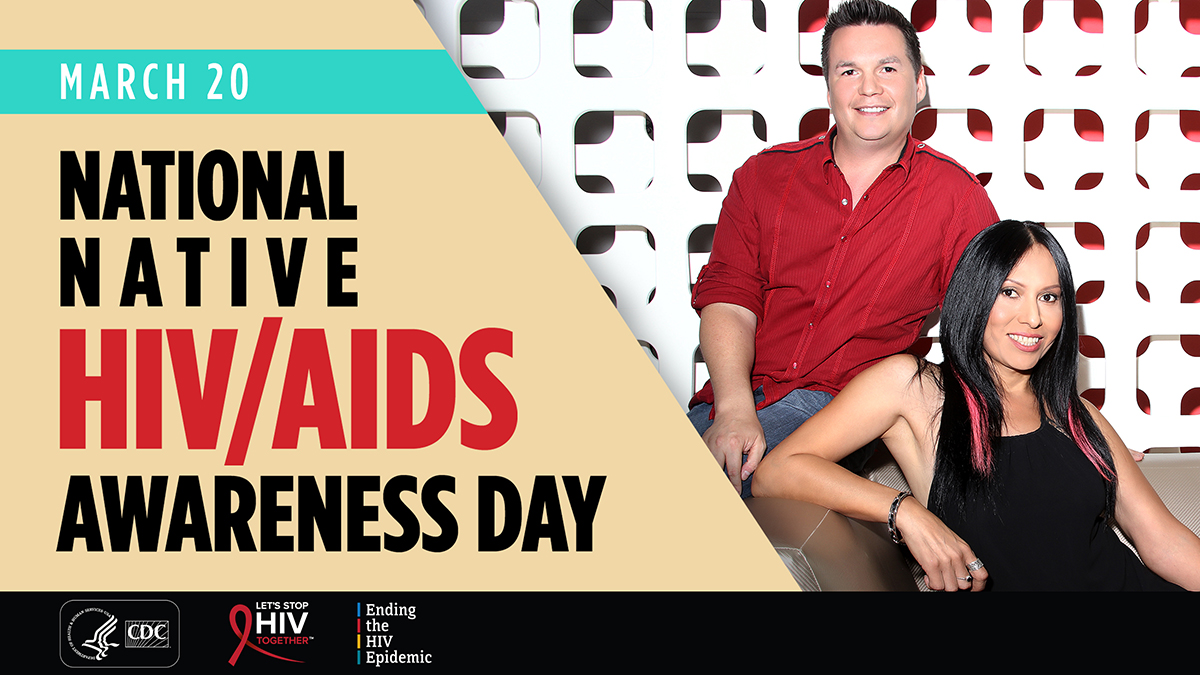march 2021
This is a repeating eventmarch 20, 2022 12:00 am
march 2021
This is a repeating eventmarch 20, 2022 12:00 am
sat20marAll DayNational Native HIV/AIDS Awareness Day(All Day: saturday)

National Native HIV/AIDS Awareness Day (NNHAAD) is observed annually on March 20. NNHAAD increases awareness, starts conversations, and spotlights the work being done to reduce HIV among American Indians, Alaska
National Native HIV/AIDS Awareness Day (NNHAAD) is observed annually on March 20. NNHAAD increases awareness, starts conversations, and spotlights the work being done to reduce HIV among American Indians, Alaska Natives, and Native Hawaiians, and shows support for people with HIV in these communities.
All Day (Saturday)
TEXAS

State Network:
Texas HIV/AIDS Coalition
Fact Sheets:
Impact of the Affordable Care Act in Texas
Texas High-Risk Pools: Lessons from the Past
SOUTH CAROLINA

NORTH CAROLINA

MISSISSIPPI

State Network:
Mississippi Positive Network
Fact Sheets:
Impact of the Affordable Care Act in Mississippi
Mississippi High-Risk Pools: Lessons from the Past
HIV and Ryan White in Mississippi
GEORGIA

State Network:
Georgia Equality
Fact Sheets:
Impact of the Affordable Care Act in Georgia
High-Risk Pools: Lessons from the Past
Georgia HIV Diagnoses 2015 Fact Sheet
Georgia HIV Death Rates 2015 Fact Sheet
2017 Recommendations:
60%
In 2015, black women accounted for 60% of new infections among women despite representing only 13% of the female population. Nearly two-thirds (63%) of these new diagnoses occurred in the South (CDC HIV Surveillance Report, Vol. 27, 2015), and the Deep South accounted for 48% of total new HIV diagnosis among black women in 2015.
2/3
Notably, two out of every three black gay or bisexual men who were diagnosed with HIV in 2015 lived in the South (CDC HIV Surveillance Report, Vol. 27, 2015), and 51% lived in the Deep South.
25%
Of the 25 MSAs with the highest levels of MSM living with an HIV diagnosis, 21 were located in Southern states.*
* JMIR Public Health and Surveillance — authored by researchers at Emory University’s Rollins School of Public Health
15%
In Alabama, Arkansas, Georgia, Louisiana, Mississippi, and South Carolina, more than 15% of MSM were living with diagnosed HIV infections in 2012.*
* JMIR Public Health and Surveillance — authored by researchers at Emory University’s Rollins School of Public Health
44%
44% of all people living with HIV were diagnosed in the South.
51%
In 2015, the South accounted for more than one-half (51%) of all HIV diagnoses despite representing little more than one-third (37%) of the U.S. population*. That year, 8 of the 10 states with the highest rates of people newly diagnosed with HIV were in the South: District of Columbia, Louisiana, Florida, Georgia, Maryland, Mississippi, Texas, and South Carolina.
52%
The South is 52% of the Undiagnosed Infections in the U.S.* Consequently, fewer Southerners living with HIV receive timely medical care or treatment, fewer have their virus suppressed, and a disproportionate number are missing out on the opportunity to preserve their health and avoid transmitting HIV to their partners.
ALABAMA

State Network:
Alabama HIV/AIDS Policy Partners